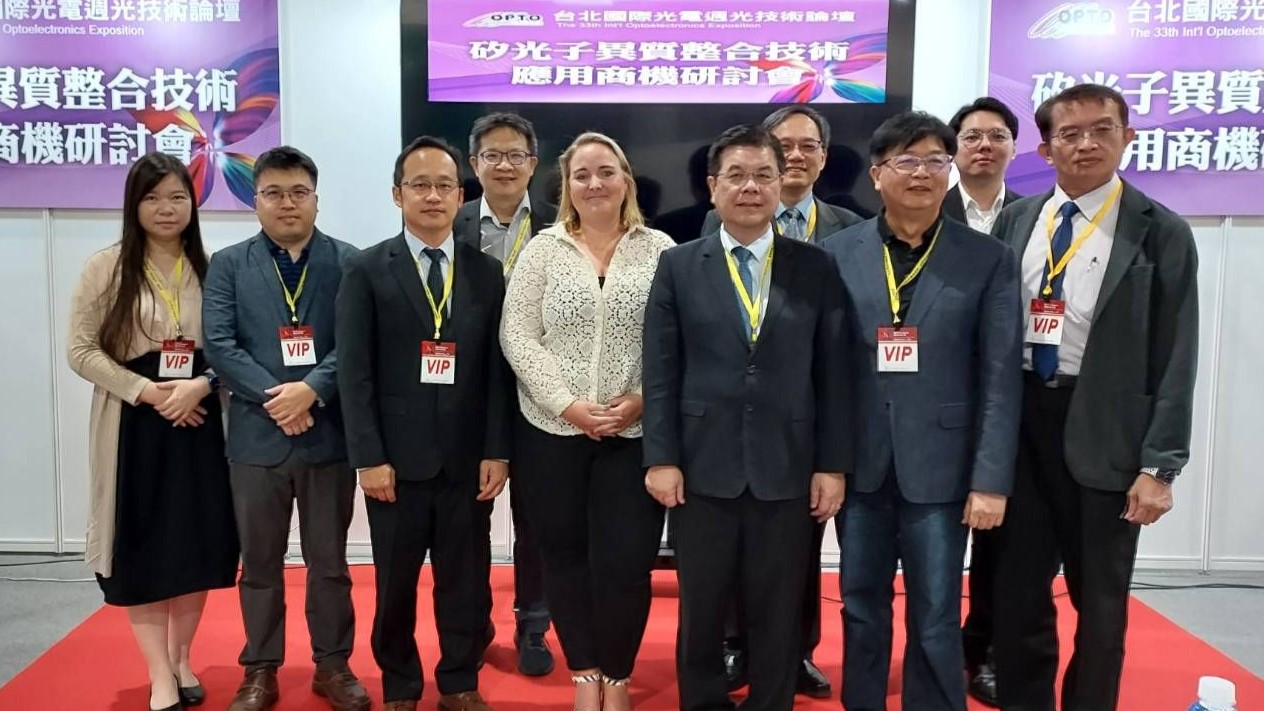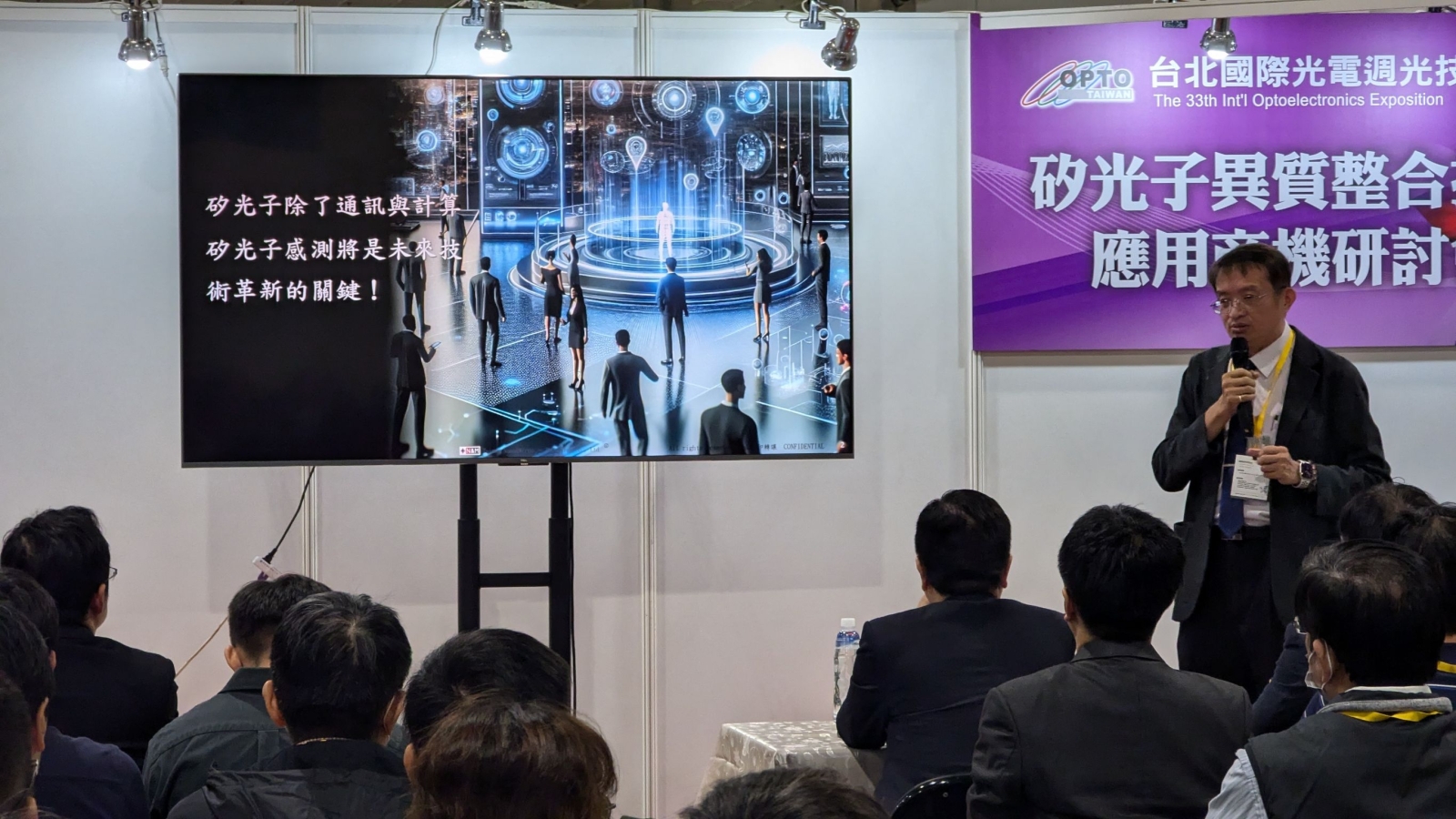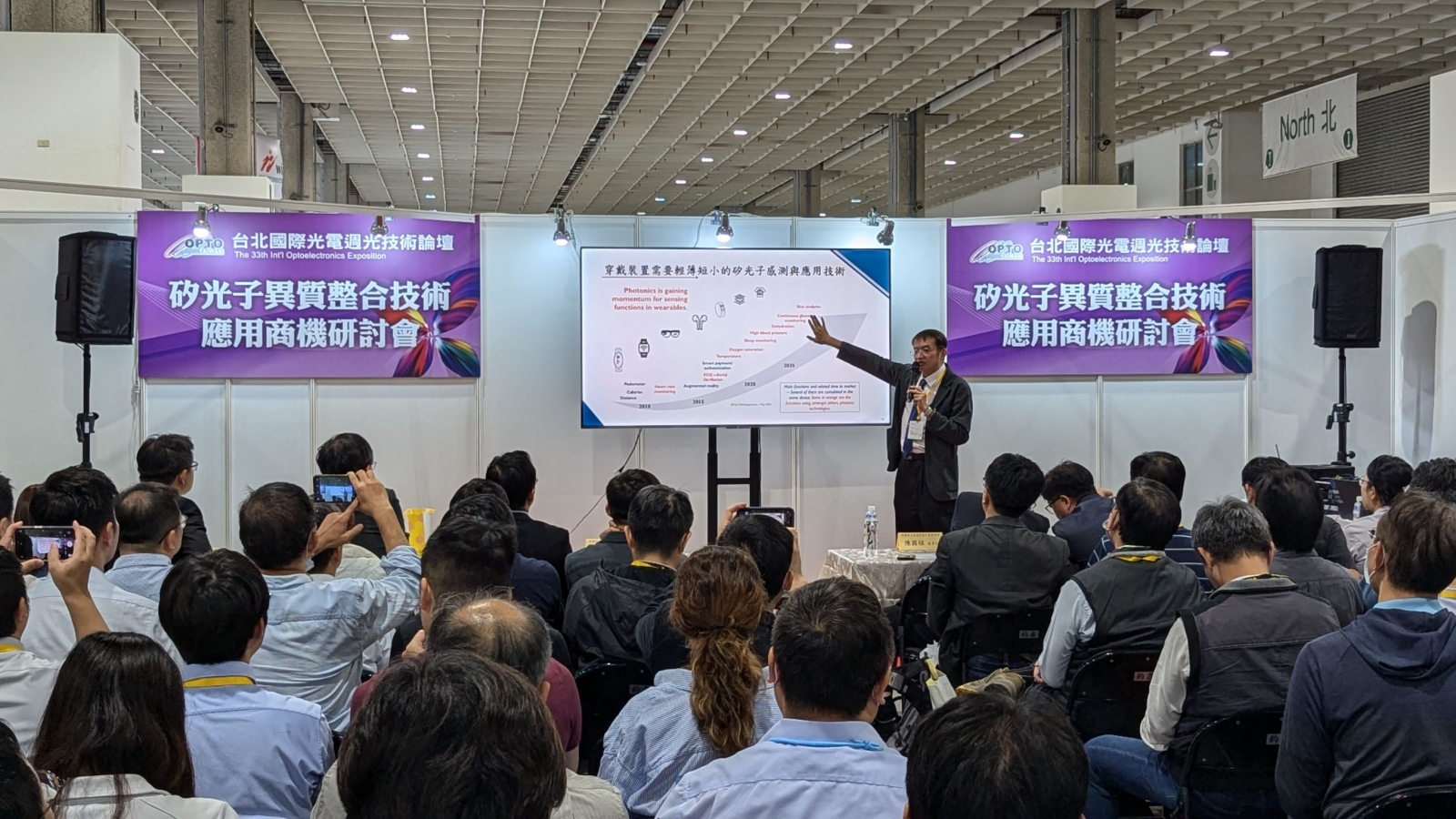
#BigHealthApp #EnvironmentDetection #4in1Chip
At the 33rd Taipei International Optoelectronics Exhibition (OPTO Taiwan), Taiwan Nano & Micro-Photonics (N&M) Chairman Rone Chiu delivered a keynote speech titled “Silicon Photonics Sensing: Unlocking Biomedical and Health Applications.” He explored the promising future of silicon photonics in the biomedical and healthcare sectors, emphasizing its transformative potential and far-reaching benefits.
This seminar, hosted by the Photonics Industry & Technology Development Association (PIDA) and co-organized by the Heterogeneous Integration Silicon Photonics Alliance (HiSPA) and the National Taiwan University of Science and Technology's Heterogeneous Integration Silicon Photonics R&D Center, aimed to advance Taiwan's silicon photonics industry. It highlighted silicon photonics’ capabilities not only in high-efficiency data transmission and processing for interconnects, high-performance computing (HPC), and AI but also in sensing applications such as biomedical sensors, gyroscopes, and ADAS (Advanced Driver Assistance Systems).

Chairman of N&M share how Silicon Photonics leads technological innovation. Picture/N&M offered
During his presentation, Rone Chiu detailed how silicon photonics sensing harnesses principles of light emission and absorption spectra to deliver precise and cost-competitive solutions. Key advantages include:
- Low-cost materials: Silicon is abundant and affordable.
- CMOS compatibility: Seamless integration with existing electronic components.
- High sensitivity: Exceptional performance in mid-infrared (MWIR) and long-wave infrared (LWIR) regions, particularly for gas detection.
This enables applications ranging from biochips to environmental monitoring. Compared to other sensing technologies like electrochemical and compound semiconductor sensors, silicon photonics excels in miniaturization, multifunctionality, and cost-efficiency.
Rone further emphasized its vast potential in physiological monitoring, such as pulse, temperature, blood oxygen, and blood pressure measurements. Cutting-edge research also reveals that early-stage diseases like epilepsy, gastric cancer, and Parkinson’s disease emit unique odors detectable by silicon photonics sensors, paving the way for innovative diagnostic approaches. Moreover, the much-anticipated “Holy Grail” of non-invasive blood glucose monitoring could rely on silicon photonics.

Exploring New Frontiers in Silicon Photonics Sensing Applications. Picture/N&M offered
In his closing remarks, Rone highlighted N&M’s groundbreaking 4-in-1 silicon photonic chip, capable of detecting four distinct optical peaks simultaneously for superior gas sensing accuracy. This innovation reinforces the company’s role as a technological platform driving advancements in biomedical and healthcare applications, offering precise, economical, and highly efficient solutions to the industry.
The seminar also covered cutting-edge topics such as gyroscopes, AI-GPU photonic interconnects, multiphysics integration, heterogeneous integration systems, and wave optics in silicon photonics. With over 200 industry and academic experts in attendance, the event underscored Taiwan’s commitment to silicon photonics development in 2024 and demonstrated the limitless potential of this technology across diverse application domains.